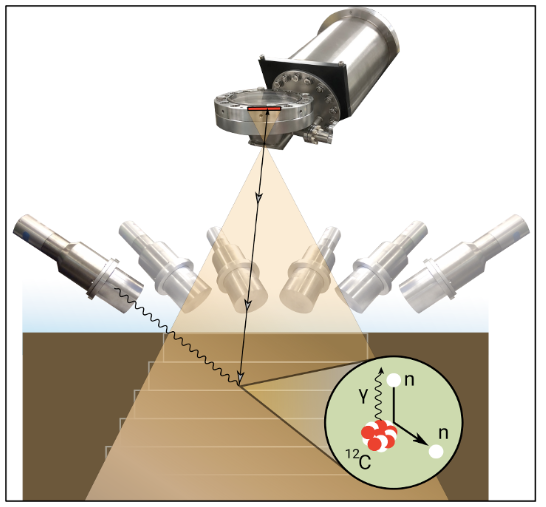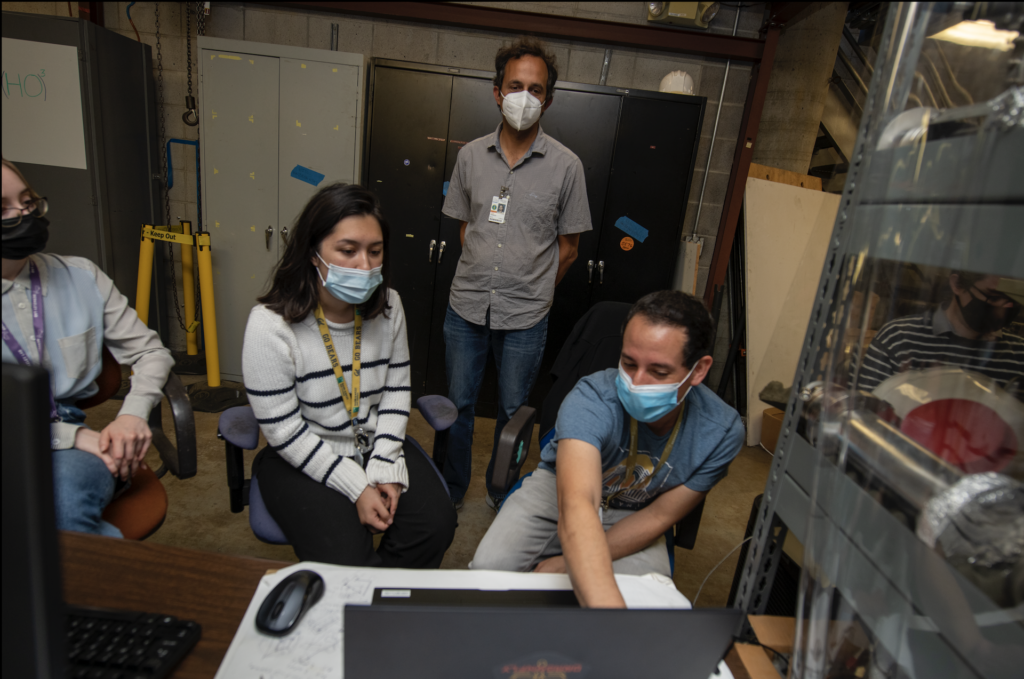Researchers from the Accelerator Technology & Applied Physics (ATAP) Division at Berkeley Lab are collaborating with colleagues from the Lab’s Earth and Environmental Sciences Area (EESA) and Adelphi Technology, Inc., a California-based technology developer, to build a new instrument that could substantially improve our ability to measure and monitor the carbon content of soil on agricultural land.
The “Real-time soil core scanner for carbon and other elements” project is supported by funding from the U.S. Department of Energy Office of Fossil Energy and Carbon Management and Office of Technology Transitions.
The two-year project “will provide a faster, cost-effective, and more accurate way of measuring and verifying soil carbon,” says Arun Persaud, a Staff Scientist from ATAP’s Fusion Science & Ion Beam Technology Program and is leading the research. “It promises to revolutionize carbon soil analysis, making it a game changer for measuring carbon capture and sequestration in soil accurately and precisely.”
Conventional methods for measuring carbon soil content, called soil core analysis, rely on subjecting large quantities of soil samples to labor-intensive processes to create milligram sub-samples, which are then quantified using chemical methods like dry combustion. These methods, however, are costly, time-consuming, do not provide the required accuracy, and are not scalable.
The new instrument, explains Persaud, is based on Associated Particle Imaging (API). This nuclear imaging technique uses neutrons and gamma rays to create images of the inside of objects, like soil cores.
“It works by firing neutrons at soil samples, which collide with atoms in the soil and produce gamma rays. By measuring the energy and timing of the gamma rays, and the timing and position of co-created alpha particles, the technique can create a three-dimensional map in real-time of carbon and many other elements in soil samples with centimeter resolution.”

The project will leverage ATAP’s previous research in developing a prototype API instrument to measure carbon in soil and the division’s expertise in ion sources, particle accelerators, and neutron beams and their applications, EESA’s expertise in soil biogeochemistry and microbiology, and Adelphi’s experience in developing API neutron generators.
The team also includes Eoin Brodie, Deputy Director of the Climate and Ecosystem Sciences Division in EESA and Associate Adjunct Professor in the Department of Environmental Science, Policy & Management at the University of California, Berkeley, and Adelphi Vice President Operations David Williams and Senior Scientist Craig Brown.
“Soil carbon accounting, and understanding why soil carbon increases in some cases but not in others, requires an understanding of soil chemical heterogeneity,” says Brodie. “A big advantage of this approach is that you not only get accurate carbon measurements, you also get data on the elemental composition of the soil matrix where carbon is detected in a routine and reproducible way. That’s powerful!”
If successful, the technology promises a more robust, faster, and cheaper soil carbon analysis method than current techniques and would support broader efforts toward a more environmentally sustainable economy.
Learn More
